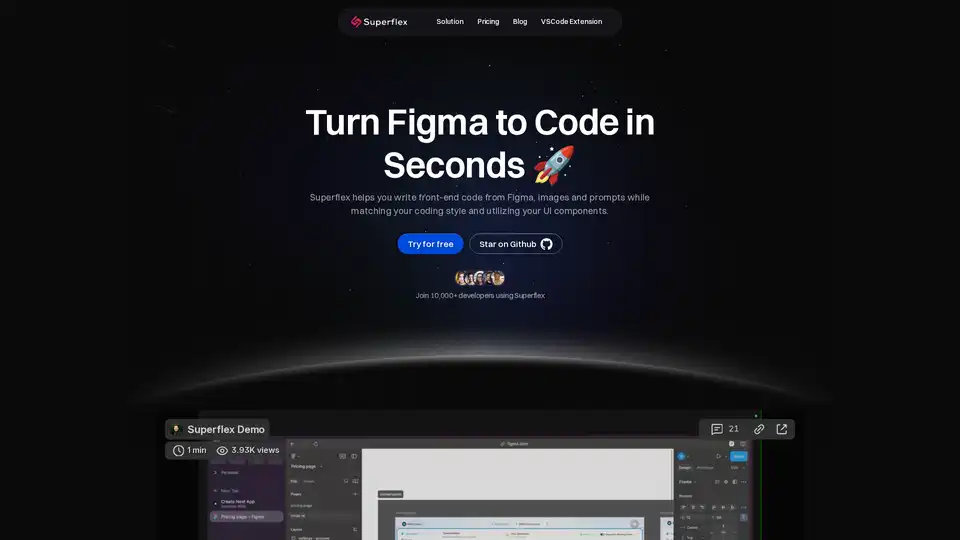
Superflex
Overview of Superflex
What is Superflex?
Superflex is an innovative AI-powered tool designed to revolutionize front-end development by transforming Figma designs, images, and even text prompts into clean, production-ready code in mere seconds. Developed by Aquila Labs, Inc., it addresses common pain points for developers who spend excessive time manually coding UI elements to match design files. Instead of tedious copy-pasting into tools like ChatGPT or wrestling with spaghetti code, Superflex streamlines the process, adapting to your existing codebase and coding style for seamless integration.
This isn't just another code generator; Superflex stands out by analyzing your project's UI components and generating code that feels native to your workflow. Whether you're building new features or iterating on existing designs, it promises to make you a "10X engineer" by cutting down development time significantly. With over 10,000 developers already on board, including engineers from top companies, Superflex has proven its value in accelerating UI implementation.
How Does Superflex Work?
At its core, Superflex leverages advanced AI to interpret visual inputs and output structured code. Here's a breakdown of its key mechanisms:
Input Processing: Superflex accepts direct inputs from Figma files, uploaded images, or descriptive prompts. No need for manual extraction— it pulls designs straight from your Figma workspace, ensuring accuracy from the start.
Codebase Analysis and Integration: One of its standout features is the ability to scan your existing repository for UI components. By understanding your design system, Superflex reuses these elements in the generated code, avoiding redundant work and maintaining consistency.
Style Adaptation: The AI studies your coding patterns—indentation, naming conventions, framework preferences (like React or Vue)—and mirrors them in the output. This makes the code immediately editable and understandable, reducing the learning curve for your team.
Output Generation: In seconds, it produces pixel-perfect front-end code that's ready for deployment. From HTML/CSS to framework-specific snippets, the results are optimized for performance and responsiveness.
This process eliminates hours of manual tweaking, allowing developers to focus on logic and innovation rather than pixel-matching. For instance, if your Figma file includes complex layouts or interactive elements, Superflex handles the translation while preserving design fidelity.
Core Features of Superflex
Superflex packs a suite of features tailored for modern development teams:
- Figma Integration: Seamless import from Figma, supporting unlimited projects in paid plans.
- Image and Prompt Support: Convert sketches, screenshots, or natural language descriptions into code—ideal for rapid prototyping.
- Component Reuse: Automatically detects and incorporates your custom UI library, enhancing efficiency in large-scale projects.
- Style Matching: Ensures generated code aligns with your team's standards, minimizing review cycles.
- VSCode Extension: Available as a plugin for Visual Studio Code, enabling in-editor code generation and quick previews.
- Request Limits and Scalability: Plans offer varying numbers of premium and basic requests, with unlimited options for teams.
- Security and Privacy: Team plans include a zero data retention policy, ensuring your designs and code stay confidential.
These features make Superflex versatile for solo developers, small teams, or enterprises aiming for an 80% boost in front-end velocity.
How to Use Superflex
Getting started with Superflex is straightforward, designed for minimal setup:
Sign Up and Choose a Plan: Head to the Superflex website and select from Free, Individual Pro ($19/mo billed yearly), or Team ($199/mo for 5 licenses) plans. The free tier lets you experiment with images and prompts.
Install the Extension (Optional): For enhanced integration, download the VSCode Extension from the marketplace. This allows direct Figma imports and code insertion into your workspace.
Input Your Design: Log in, import a Figma file, upload an image, or enter a prompt describing the UI you want.
Generate Code: Hit the generate button. Superflex processes the input, analyzes your linked codebase if provided, and outputs the code snippet.
Review and Deploy: Edit as needed—the code is already styled to match your preferences—then integrate it into your project.
Support is robust: Free users get community help, while Pro and Team plans offer priority email or Slack support, plus a 30-day money-back guarantee.
For installation queries, Superflex provides clear guides in its FAQs. Code from screenshots works by AI interpretation of visual elements, similar to advanced OCR combined with design understanding. Integration with existing codebases is a yes— it pulls from GitHub or local repos. All generated code is fully modifiable, empowering developers to customize further.
Why Choose Superflex?
In a crowded field of AI tools, Superflex excels for several reasons:
Time Savings: Developers report slashing UI coding time from hours to minutes, freeing up resources for core features.
Accuracy and Quality: Pixel-perfect outputs reduce the need for design handoffs and revisions, fostering better collaboration between designers and engineers.
Cost-Effectiveness: Transparent pricing with no hidden fees; the free plan is generous for testing, and annual billing saves up to 20%.
Scalability for Teams: Centralized billing, unlimited requests, and advanced features make it ideal for growing organizations.
User testimonials highlight its role in top companies, where it boosts productivity without compromising code quality. Unlike generic generators, Superflex's focus on personalization ensures it fits into real-world workflows, not just prototypes.
Who is Superflex For?
Superflex targets a wide audience in the tech space:
Front-End Developers: Those tired of manual UI implementation from Figma mocks.
UI/UX Designers: Who want to see their designs come alive in code quickly, aiding in client presentations.
Full-Stack Teams: Needing efficient bridges between design and development phases.
Startups and Agencies: Looking to accelerate feature builds without expanding headcount.
Freelancers: Benefiting from the affordable Pro plan for multiple client projects.
If you're dealing with repetitive UI tasks or aiming to integrate AI into your dev pipeline, Superflex is a game-changer. It's particularly valuable for React/Vue users but adaptable to various frameworks.
Pricing and Plans
Superflex offers flexible tiers to suit different needs:
| Plan | Price (Billed Yearly) | Key Features |
|---|---|---|
| Free | $0 | 1 project, 15 premium requests/mo, 100 basic requests/mo; Images & prompts only |
| Individual Pro | $19/mo | Unlimited projects, 250 premium requests/mo, unlimited basic; Figma import, priority support |
| Team | $199/mo (5 licenses) | Unlimited everything, team billing, zero data retention, Slack support; $59 per additional user |
All plans include a 30-day money-back guarantee, making it risk-free to try.
Practical Value and Use Cases
Superflex delivers immense practical value by automating the design-to-code bottleneck, a common hurdle in agile environments. In use cases like e-commerce site rebuilds, mobile app UIs, or dashboard prototypes, it shines by generating responsive components that integrate flawlessly.
For example, a team prototyping a new landing page can input a Figma sketch, get styled React code, and deploy it within an afternoon—far faster than traditional methods. Its adaptation to coding styles also aids in maintaining project uniformity, crucial for enterprise-scale apps.
Common issues like mismatched styles or incomplete integrations are mitigated through its AI-driven analysis, with FAQs covering edge cases like sketch-based generation or codebase syncing.
In summary, Superflex isn't just a tool; it's a productivity multiplier for anyone in front-end development. By bridging the gap between design vision and functional code, it empowers developers to build faster, smarter, and with greater confidence. Ready to transform your workflow? Start with the free plan today and experience the difference.
Best Alternative Tools to "Superflex"
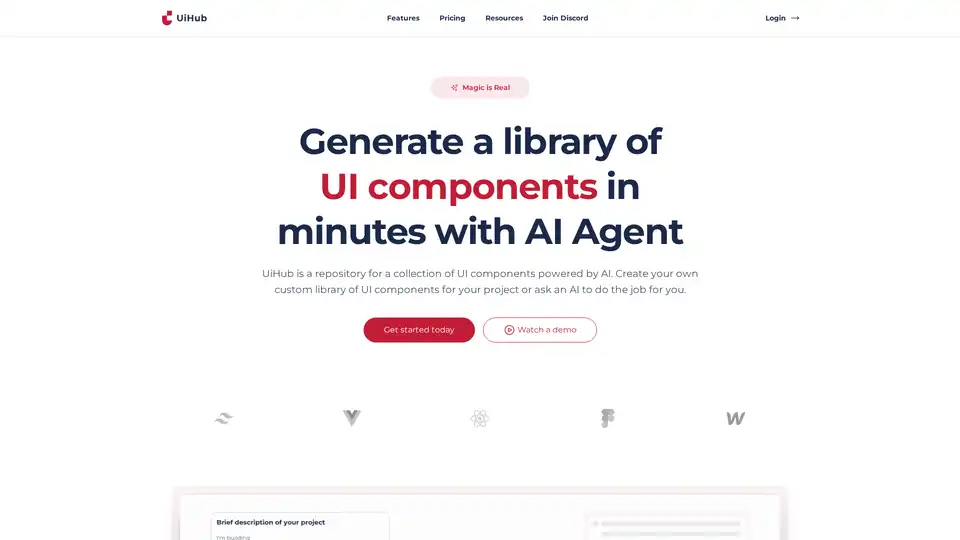
UiHub is an AI-powered platform for generating and managing TailwindCSS UI components. Create custom libraries or use AI to speed up your frontend development workflow.
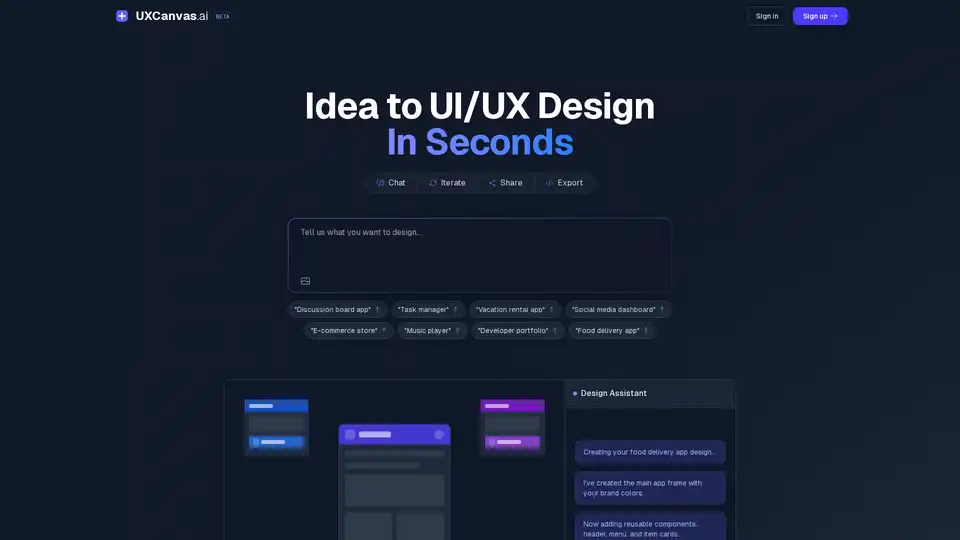
UXCanvas.ai is an AI-powered UI/UX design tool that transforms ideas into stunning designs in seconds. Design through conversation, iterate in real-time, and export to Figma or code.
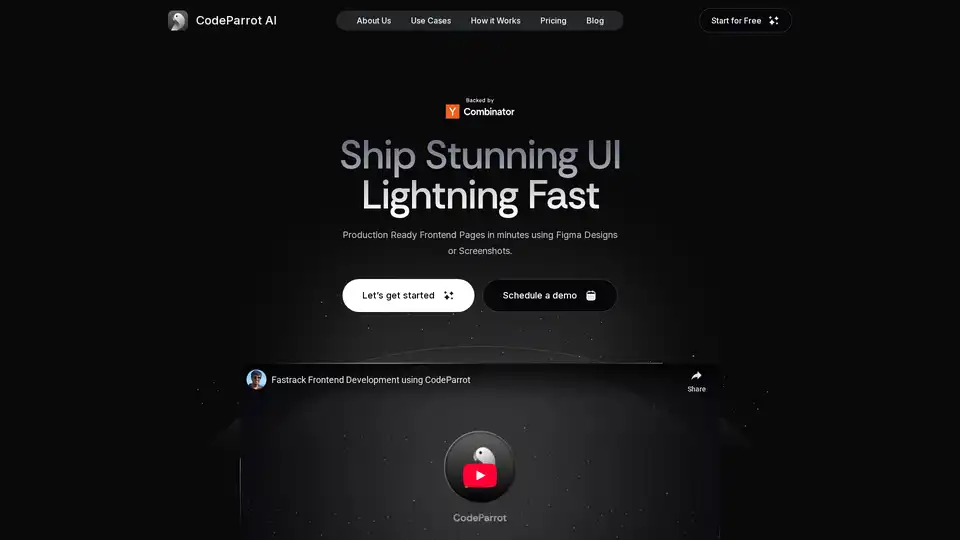
CodeParrot is an AI-powered tool that generates production-ready frontend components from Figma designs or screenshots, enabling rapid UI development and integration with existing codebases and workflows. It supports various frameworks and coding standards.
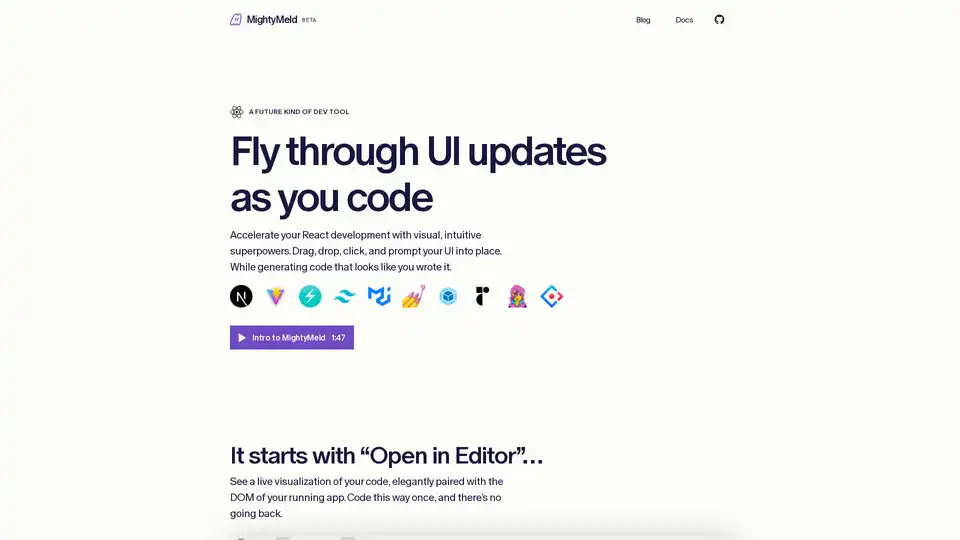
MightyMeld is a visual React development tool that allows developers to manipulate UI elements and generate code visually, speeding up frontend development. It's like Figma for developers.
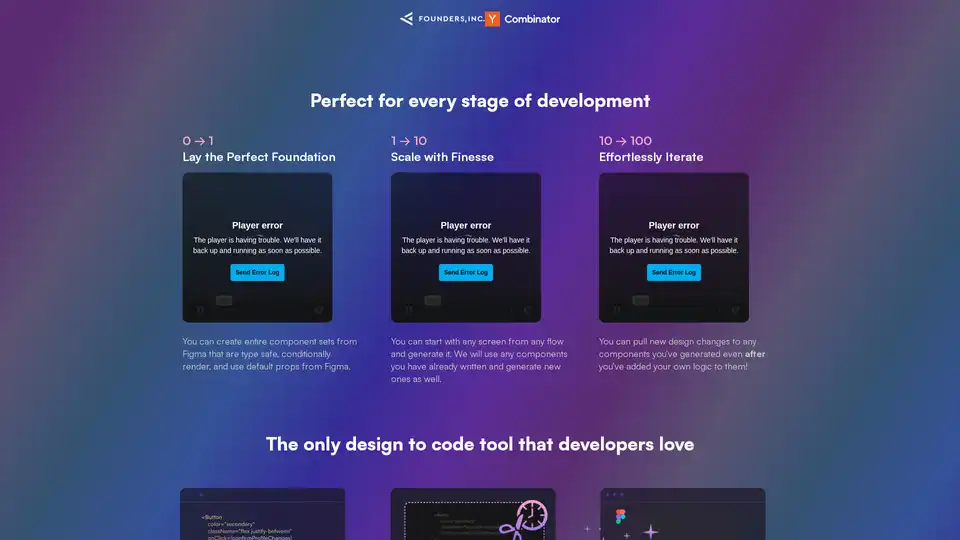
Bifrost uses AI to automatically convert Figma designs into clean React code with Tailwind and Chakra UI support, saving development time.
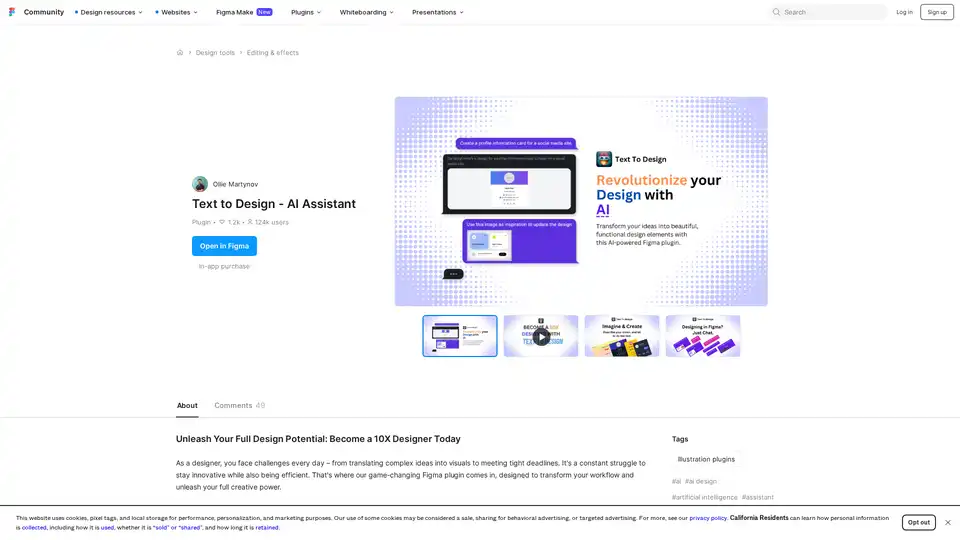
Text to Design AI Assistant is a revolutionary Figma plugin that transforms text prompts and images into professional designs using advanced AI technology for faster design workflows.
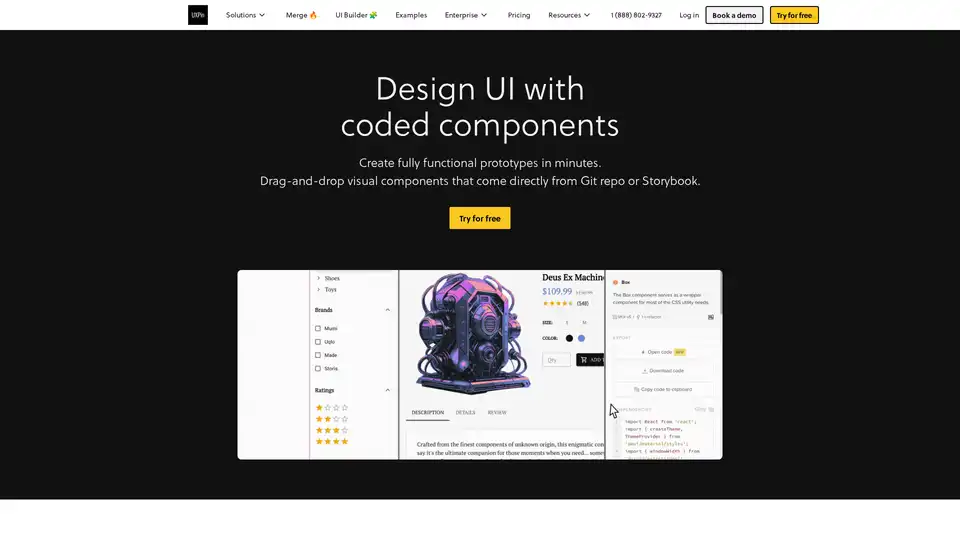
UXPin Merge accelerates UI design 8.6x faster with AI-generated components, coded libraries like MUI and Tailwind UI, and seamless React code export for developers.
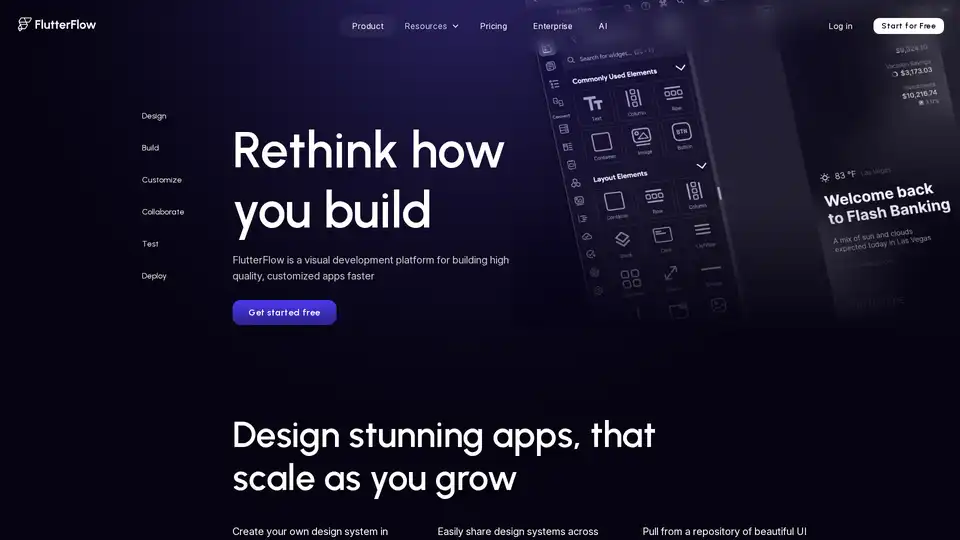
FlutterFlow is a Visual Development Builder that lets you build cross-platform apps incredibly fast in your browser. Build fully functional apps with Firebase integration, API support, animations, and more. Export your code or deploy directly to app stores.
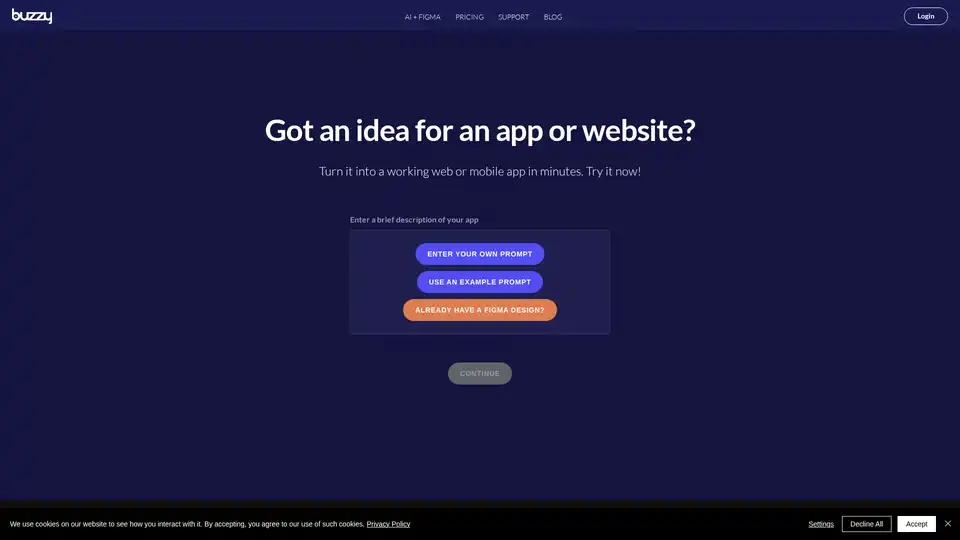
Buzzy is an AI-powered no-code platform that transforms ideas into high-quality Figma designs and full-stack web or mobile apps in minutes. Start from scratch or integrate with Figma without coding for rapid app development.
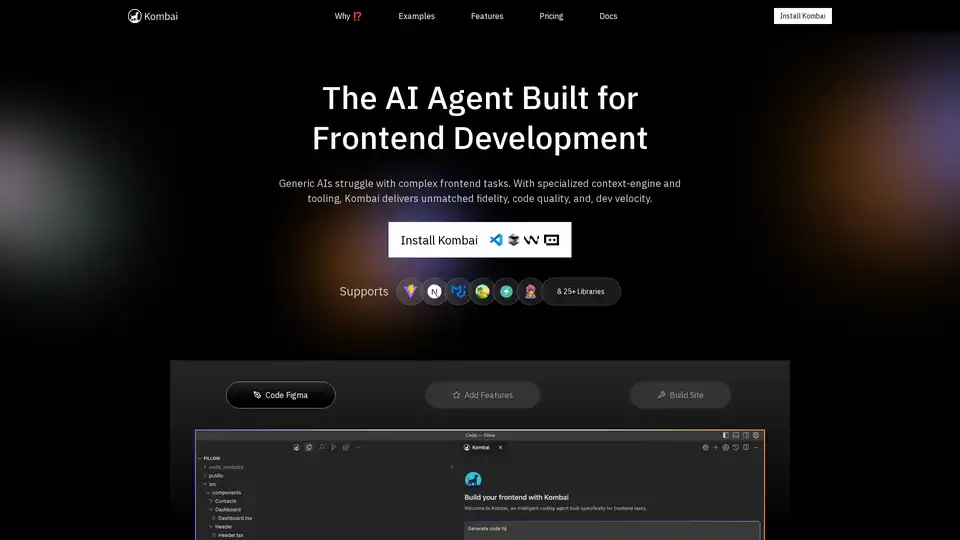
Kombai is a specialized AI agent for frontend development, excelling in converting Figma designs, images, and text prompts into high-fidelity code with superior speed and accuracy for React and more.
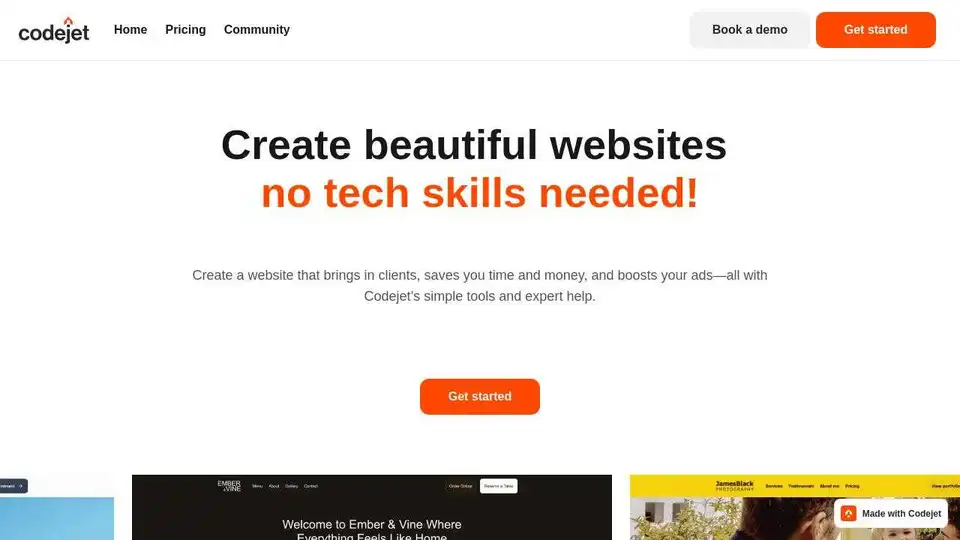
Codejet (now mysite.ai) is an AI-powered platform that turns Figma designs into production-ready websites with one-click. Edit visually and launch faster. Automate your design to code workflow.

Superflex instantly converts Figma and Image designs into production-ready code. Boost team efficiency and maintain coding standards with this AI-powered Figma-to-code solution.
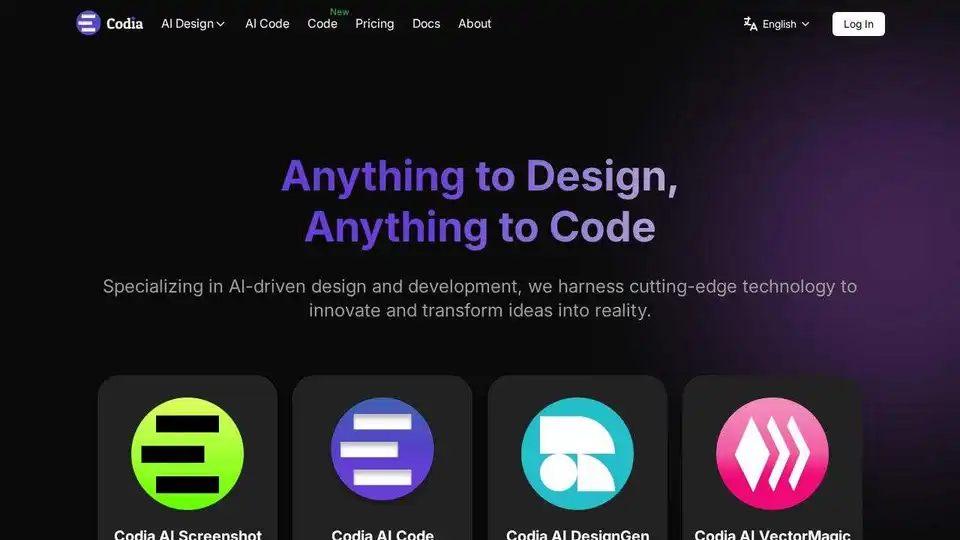
Codia AI speeds up design and development with AI-powered tools. Convert screenshots, PDFs, and webpages to Figma designs and code effortlessly. Boost creativity and efficiency.
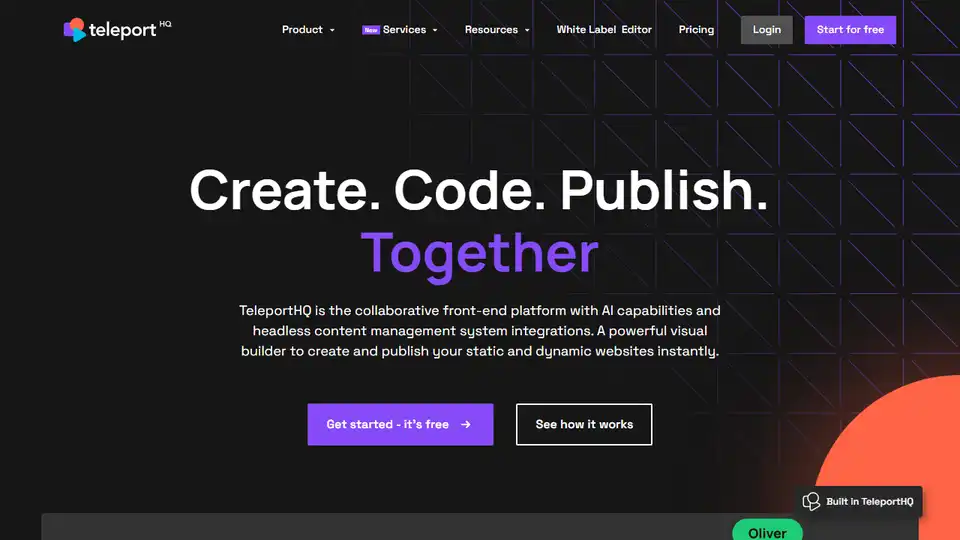
TeleportHQ: low-code front-end platform with AI, visual builder, headless CMS. Build static & dynamic websites instantly.
